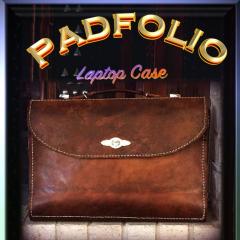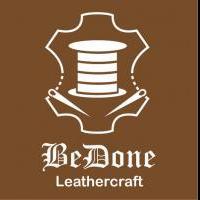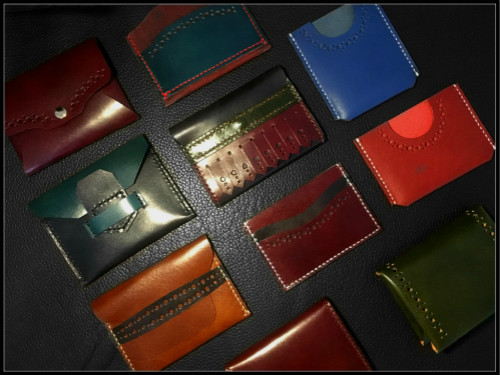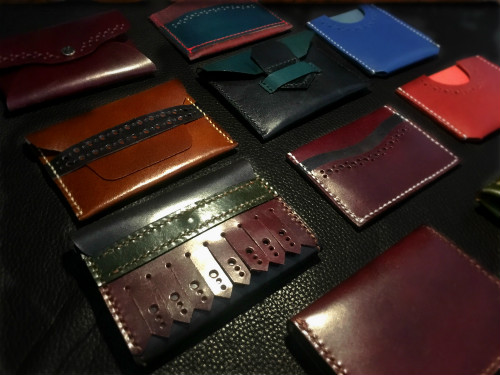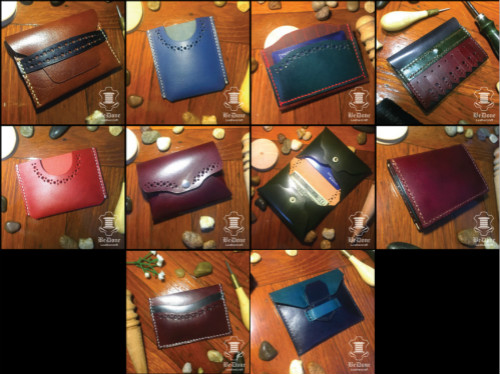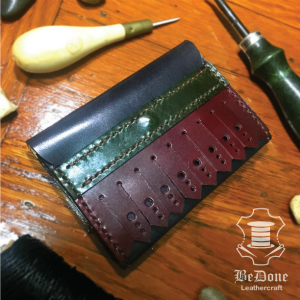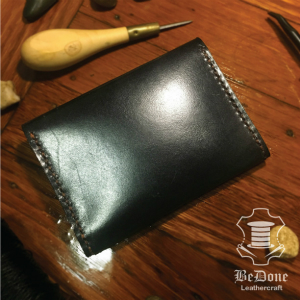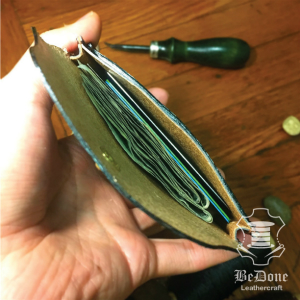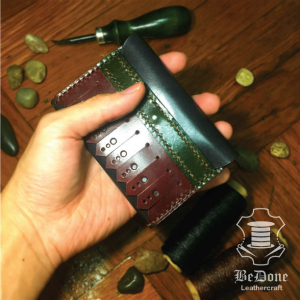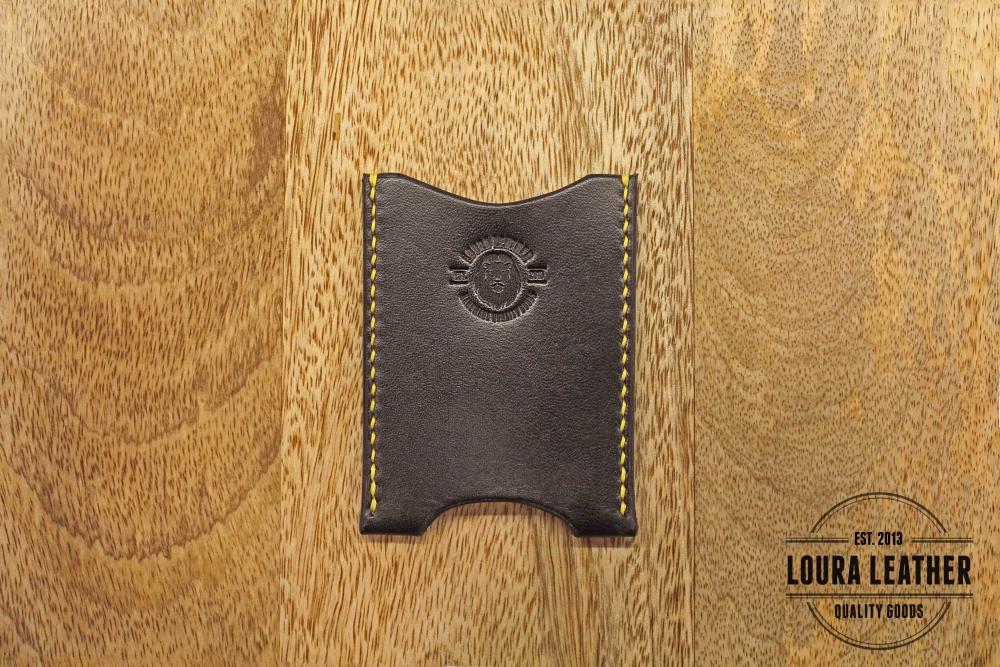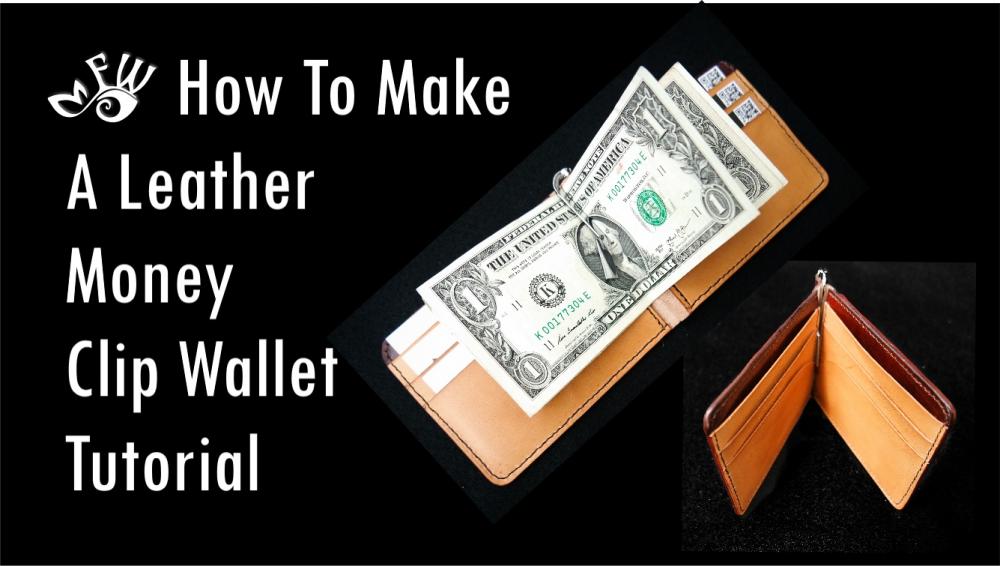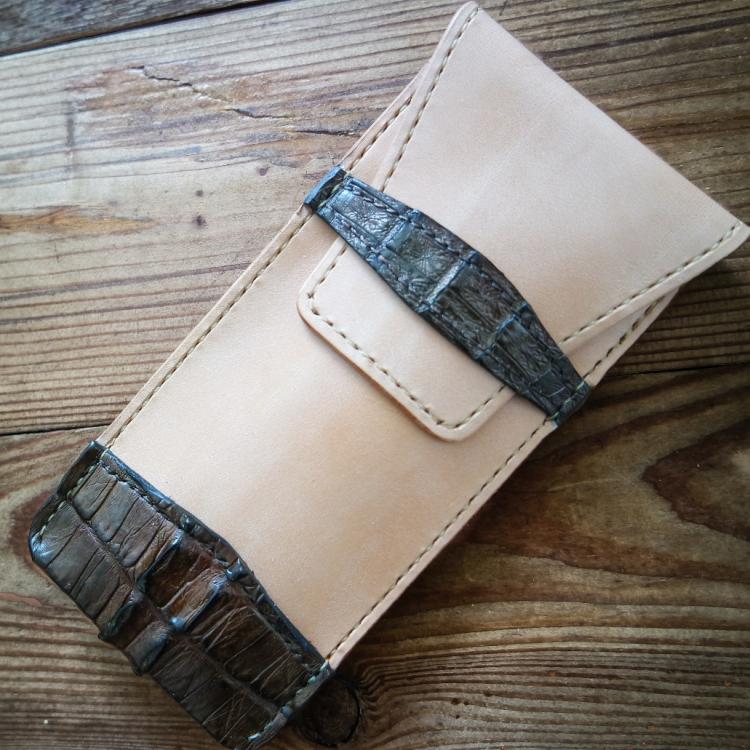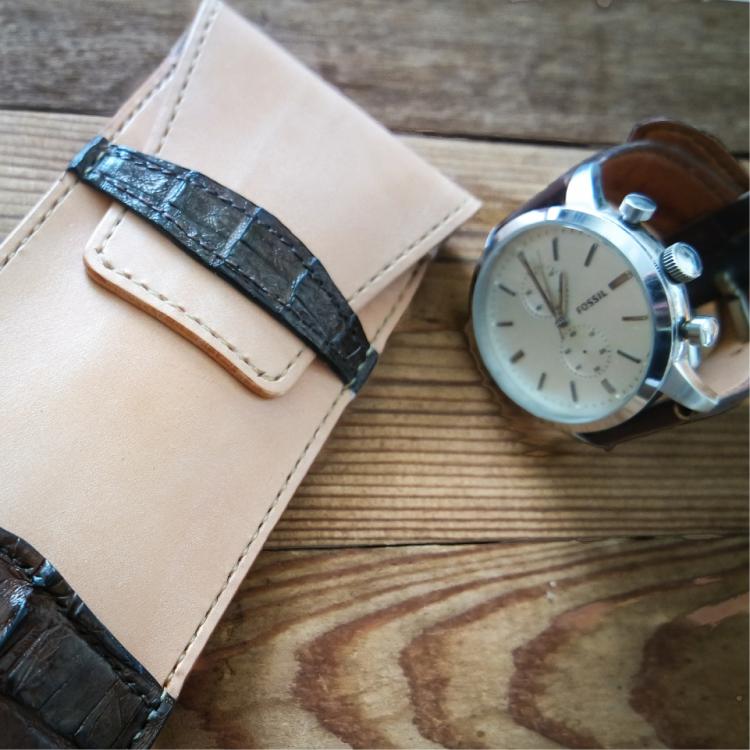Search the Community
Showing results for tags 'tutorial'.
-
Here is a video we did a couple weeks ago. We show how to find the middle of a belt to put a name in. Also, we talk about and show how to space letters. It is an hour long, but we have fun and answer some other questions. Customizing a Belt https://youtu.be/9-CfbHUnw1I
-
This is a method I use to help make my prototypes quickly and neatly. The example product is a double zippered key purse which unfortunately had a design change halfway through. The first 3 pictures show the key purse when finished. This one is the side that holds the most bulky key bunch. This is the other side This one shows what it all looks like when closed up. The following picture shows the patterns I've drawn for this model and they are the patterns for first cutting the pieces. They are 2mm all around over the size they will be cut down to in later steps. This picture shows how before cutting out I give the thin cardboard a spray with some contact adhesive and left to dry for 1/2 hour or more. Brushing on is alright as well but do it light and quick so as to not change the cardboard shape. The patterns now hold down well for cutting out if placed onto a poly cutting surface. The poly cutting boards for kitchens work well as well. Here I show the 1st cut patterns neatly cut and no movement. Next I use the same procedure for the second cut patterns shown below All the patterns cut out and shown below Next a sharp knife is used to cut out the leather pieces. Note that the glue holds down well still but not enough to damage the leather when removed. Shows cardboard being removed. All the leather parts needed are now cut out. The crocodile parts will come later. I think that is the limit of pictures I can load in one go so more a bit later.
- 16 replies
-
- pattern cutting tips
- key purse
-
(and 1 more)
Tagged with:
-
While written for the intermediate-level audience, here's a relatively simple project for most anyone. Using the concepts presented here, the variations are limitless Please post a pic of your project interpretation here and share your tips and tricks as well. Making Leather Flip Flops.pdf
- 131 replies
-
- flip flops
- pattern
-
(and 2 more)
Tagged with:
-
First I have to say i'm no expert, I am a self-taught hobbyist. Not that it matters in this tutorial, the purpose is to get a nice result, and this is a nice result. (In my opinion) There is of course more than one way to skin a cat (of course not literally in this context) but if we are talking literally there is more than one way to skive a cow (in my example I use a vegetable tanned cow skin. So this is how I do it and it works for me. What do you need, except your card pocket you plan to skive? 1. A sharp knife, it doesn't have to be something expensive, you can get a good result with a skiving knife for a couple of usd/euro. But if you can afford it, I would recommend a knife with decent steel. A really cheap knife will have a bad edge retention and you will have to sharpen it constantly. I use a Kyoshin Elle. https://www.goodsjapan.com/kyoshin-elle-japanese-leathercraft-utility-skiver-beveller-leather-knife-angled/a-20860 2. Should you skive with the bevel down or the flat side down? I'm right handed and use the knife I just linked. And I prefer to skive with the bevel down, then I get a "fulcrum point" to angle my knife on. 3. Push or saw? I prefer to saw through the edge in multiple passes. So let's start. 1. Scribe a line where you want to skive. (I filled my line with a pen so you can see better) 2. Make a first light skive (sawing motion) from right (the corner) to left. And keep doing a couple of skives until you skived the edge. Let's say your leather is 1mm thick and now it's around half of the thickness (0.5mm) and you want it thinner, you can wait with this until you skived the "pocket ear" (because it will be easier to see with a clean edge) 3. Do the same on the "pocket ear" to stop the leather from sliding away you can use your left hand to hold it down with a glue spreader at a low angle (I'm right handed so I skived with my right hand) 4. If you need to skive more to get your edge thinner, you can do it know. And the finished result.
-
- 5 replies
-
- card holder
- tutorial
-
(and 2 more)
Tagged with:
-
Hi everyone. There was a question by a fellow member asking about vector imaging for patterns. @JLSleather was the inspiration for me wanting to make up this little "tutorial" or rather an example of what may be achieved fairly simply with Inkscape. It is also JLS' holster patterning methods that i will be using. For those who don't know, Inkscape is a free vector drawing software that is similar to adobe illustrator or Corel Draw. I'm sure these programs are far more advanced than I care to get involved with. I don't need anything that will recreate the Sistine Chapel, just something utilitarian enough for me to make up some patterns when I need to. I like Inkscape because it is just that and it gets the job done. Especially for poor....or cheap... guys like me who can't draw a straight line given a ruler... ok maybe not that bad but you get my point. So, please find attached, hopefully, two PDF files. One is just the holster pattern I created during the tutorial, the second is the "tutorial" or walk through itself. My goal is to try and help people so if there are any questions I'll do my best to answer them. Please don't take this as an in depth tutorial on how inkscape operates or how to use any of the functions there in. That type of tutorial is far outside my grasp. For getting the hang of things i recommend youtube. I mentioned a source in the tutorial for your reference. Thanks again to JLS leather for the inspiration! Keep on keeping on Leatherheads! P.S i hope the uploads work, and i have to use my google drive to share the tutorial as its too large... anyone know a better way? let me know. cool THANKS YALLS!!! tutorial shareable link https://drive.google.com/file/d/11_wYwKuIVkPNP4M6ZC7q9JJIL_2S6QI7/view?usp=sharing inkscape1911pattern.pdf
- 15 replies
-
- tutorial
- vector imaging
-
(and 2 more)
Tagged with:
-
Hi, was wondering if anyone has a set of Dale Harwood saddle making DVD’s. I really can’t affor the $450 US for a new set and was hoping someone may want to part with theirs. I’m just starting out and am trying to the best I can find to study.
-
- dale harwood
- saddle making
-
(and 2 more)
Tagged with:
-
The Pros and Cons of Crafting with Leather 7/13/2018 0 Comments As a textile material it’s said that the origins of leather are as old as civilization itself? A lot of writers credit its origins to different points in history, but perhaps the most impressive is actually found in the Bible. The Bible credits the origins of leather all the way back to Adam and Eve. After they sinned and were removed from the Garden of Eden it’s said that God made them garments from skin and clothed them. What type of skin? It doesn’t say, but I’m guessing it might have been a lamb or something similar. So regardless of what point in history you go back to, leather has been around a long time and will probably be around until the end of civilization itself. But what has made this material so appealing throughout the ages? Perhaps this blog is not intended to completely answer that question, but feel free to add to it with your comments below… So for now, let's talk about the pros and cons of crafting with leather. I think the best way to tackle this topic, is to simply look at the qualities of the material and it applications. In this blog I’m only going to be focusing on vegetable tanned leather, since this is what was used historically. Chrome tanned leather didn’t come along until the 1800’s. The Pros – It’s an eco-friendly and natural resource – No harmful chemicals are used in the tanning process. It has a very pleasant fragrance - Natural rich earthly scent that doesn't overwhelm. It is ideal for use in art or craft – Images can be carved and tooled into the surface of the leather to transform this material into literal works of art It can be wetted and molded into any shape or form you want. Magnificent statues and pieces of art have been molded with leather throughout the centuries, such as in the image to the right. It can be stained or dyed to any color you want It’s extremely durable and can last a lifetime (Special emphasis on Vegetable tanned leather) It’s not that expensive… - You might be surprised to here me say that, but considering what leather is and how much you can buy for the price, it really isn’t that expensive. Since leather is a natural resource, it’s prices will fluctuate from time to time. But regardless, I still think it’s a very affordable craft material that is unmatched by any other. It’s compatible – Leather is also very compatible with other textile materials, wood, and more. Leather takes on beautiful properties as it ages and antiques - As leather is exposed to natural elements, such as sunlight, moisture, and oils from our hands, over time the leather will take on a beautiful natural patina tan that only adds to it beauty and look. Cons – Leather requires a little upkeep – Compared to other textiles leather actually requires much less upkeep to maintain, but in order to keep it clean it’s best to protect your leather goods with leather care products from time to time. Best not to get it wet! – Leather can handle some moisture but being a natural material it’s best not to leave it in the rain if you really want it to last. Shopping for leather – One of the biggest complaints people have when buying vegetable tanned leather is that it has some scaring on the leathers top surface. But this is unavoidable since the leather is a natural material. So, if the animal is raised on the free-range, then it’s going to have some scaring from bug bites, barbed wire fences, branding marks, or other animal bites. In some ways I think these marks lend character and beauty to the properties of the leather, but if you are shopping for perfection, then there are more expensive hides that can be purchased. Top quality hides are usually made from animals that are raised in protective environments where their exposure to harmful conditions are removed. These hides are of course very beautiful, but also very costly. Sometimes it’s more affordable to buy 2 hides of a cheaper leather with scars than it is to buy 1 piece of hi-quality leather. I guess it just depends on what you are making and what the job demands. It’s a less known craft niche – Some may see this as a pro or a con, but I think the leathercraft industry doesn’t get the attention it deserves. Considering everything that can be done with leather and rich history of the craft I hope to see it become one of the most popular crafts the world has to offer. So as far as I can tell the pros, far outweigh the cons... What do you think?
-
Since Halloween is coming up, I thought I'd share my mask making tutorial. It of course is not the absolute word in mask making, but I thought it was a good introduction. Just follow the link: http://ranasp.deviantart.com/art/Leather-Mask-Making-Tutorial-41572623 and click on the image to make it larger. I'd welcome any thoughts on it as well.
-
Hey! I'm trying to make my first shoulder rig. My brother-in-law has asked me for a setup for a double 1911 shoulder holster with thumb break and to make things more difficult, he wants the holsters detachable to wear on his belt. I can do OWB and IWB all day but wrapping my mind around making a pattern for this request has me blanking out. Can anyone help me out?
-
I make this video on YouTube explaining how to make one of my Leather Key Fobs, I have the plans available for purchase on etsy, for a small ammount, just to help me out make new video in the future. Check it out if you're interested; Leather Key Fob Tutorial Video Plans and Template available for purchase: Leather Key Fob Tutorial and Template
-
- leatherwork
- leather
- (and 6 more)
-
Hi guys, I'm selling all my leather crafting DVDs. Saddlemaking: The Ground Seat by The Traditional Cowboy Arts Association 30$ Floral Design by Cary Schwarz 30$ Floral Carving by Cary Schwarz 30$ (buy both Cary Schwarz DVDs for 50$) The Art of Leather Carving and Floral Layout by Jeremiah Watt 130$ Cowboy Crafts by Jeremiah Watt 130$ (buy both Jeremiah Watt DVDs for 250$) The Art of Saddle Making by Dale Harwood 100$ buy everything for 380$ shipping to the US - 25$ shipping to the EU - 15$
- 1 reply
-
- jeremiah watt
- dale harwood
- (and 6 more)
-
Hey guys, this is just another video of me making one of my wallets, this time a Leather Card Sleeve. The video is a much shorter one, not a tutorial per se, more of an entertainment video for those who like to watch, hope you guys like it! https://www.youtube.com/watch?v=VB_br0q1cG8&t=7s
- 1 reply
-
- wallet
- card sleeve
-
(and 6 more)
Tagged with:
-
Hello everyone, I have just released my latest tutorial on an ultra thin and compact leather money clip wallet. You can visit my Youtube channel to see the new tutorial at: https://www.youtube.com/channel/UCuxgLLYGCxEJInI0NlbAgMA. Thanks!
- 1 reply
-
- money
- money wallet clip
- (and 9 more)
-
Using exotic leather on your leatherwork can give your craft a very eye-catching look and add value and interest in what you are making. In this video tutorial see how I use alligator skin to give a simple pencil case a whole new look and feel. If alligator skin is not your thing, then you could use a wide variety of other leather types or materials in it's place to make it unique. Regardless, what I love about handmade leather goods is that in the end you have something that will most likely be with you for a lifetime and carry a story with it. If you'd like to try your hand and making this project a printable PDF pattern with instructions and materials I used to make this project can be downloaded from my website at www.fischerworkshops.com To see how it's made just click here to view my video guide to making an exotic leather pen case
- 4 replies
-
- exotic leather
- fischer workshops
- (and 10 more)
-
Hey guys, I've shot a real simple video of me making just a standart Key Fob, really easy for a first time project, except for the stitching part, obviously. I hope you guys can enjoy it, I haven't posted here in a while so I thought this would be a good time to do that! Also, the Key Fob that I made in the video is up for a GIVEAWAY, all you have to do is go to my Facebook or Instagram page (links below), like or follow, and comment on the Key Fob picture with the hashtag #iwantthekeyfob, next sunday I'll pick a random winner and that's it! I've made really basic step by step pdf instructions with the template, anyone can have it for free, jus make sure you support my social media and ask me for it, I'll gladily sent it to you Link to the YouTube tutorial: www.facebook.com/louraleather www.instagram.com/louraleather Email: louraleather@gmail.com
-
Hey guys, I've shot a real simple video of me making just a standart Key Fob, really easy for a first time project, except for the stitching part, obviously. I hope you guys can enjoy it, I haven't posted here in a while so I thought this would be a good time to do that! Also, the Key Fob that I made in the video is up for a GIVEAWAY, all you have to do is go to my Facebook or Instagram page (links below), like or follow, and comment on the Key Fob picture with the hashtag #iwantthekeyfob, next sunday I'll pick a random winner and that's it! I've made really basic step by step pdf instructions with the template, anyone can have it for free, jus make sure you support my social media and ask me for it, I'll gladily sent it to you Link to the YouTube tutorial: www.facebook.com/louraleather www.instagram.com/louraleather Email: louraleather@gmail.com
-
- tutorial
- instructions
- (and 4 more)
-

Guide to Making an Exotic Leather Coin Purse
cicftaiwan posted a blog entry in Fischer Workshops Blog
This popular folding coin purse design makes for a great leather project. Small enough to conveniently store in your pocket or purse but able to store a large amount of coins in. It also opens up nice and wide so you can get what you need quickly and easily. To add value and beauty to the purse I have used several types of exotic leather for aesthetics through the circular cutout of the purse frame. I have used both alligator skin and gazelle hide as examples for this tutorial. A PDF pattern with a detailed list of leather types, tools, and products used in this project can be downloaded from Fischer Workshops. Just click on the following link to be directed to the download page...Exotic Leather PDF Pattern DownloadI have also published a video tutorial to demonstrate the step by step process I go through in making the purse. The video is only 10 minutes long, but it took me about 2 hours to complete this project. I chose to stain the leather by hand which is the longest process in making the purse. I suppose if you bought pre-stained leather you could finish this project in about an hour. To see the video just click on the link below... Thanks and Enjoy!-
- coin purse
- exotic
-
(and 8 more)
Tagged with:
-
Hi! So I've been working on a relatively newer Pfaff 335 machine and it's been getting the job done. After sewing an entire colonial style jacket out of leather and suede on a commercial machine, I finally upgraded; however, I'm beginning to think I'm making life harder than it needs to be by not using the correct settings for each job. I generally use a 17/105 or 18/110 diamond point needle for most things and the forum recently helped enlighten me about materials / needle / thread combos with the charts I found. I use a flat plate and the feed dogs in the pic below. I work on wallets, duffle bags, jackets, dopp kits and a lot of random luxury items. I even make soft leather holsters. After scouring the site and the manuals, I'm having a hard time finding good resources for what tools do what with my machine i.e. If I'm making a nice, burberry or cole haan type wallet with (fill in the blank type leather) (fill in the blank weight), I'd love to find some sort of 'standard practices' guide that answers: what needle and thread would I use? if binding edges, how to operate the edge binder and how to choose the size feeder etc etc what type of leathers are --typically-- used and what range of leather thickness? if skivving, how thin? when stitching zippers, which feet to use for the machine? I realize this just gets honed with time and each project is unique depending on the tastes but there has to be a guideline? I've figured out a lot thus far but it takes forever. Any help, resources, tables and/or charts are immensely appreciated! Thanks in advance!
-
- industrial machine
- feed dogs
-
(and 4 more)
Tagged with:
-
This is a simple technique I use to trace patterns onto my moistened leather. Instead of tracing the patterns to trace paper 1st why not trace it directly onto the leather from the printed pattern. 1st place a piece of food wrap over the moistened leather to prevent the printout from getting wet. 2nd, tape the printout over the area you want to trace the pattern onto the leather. Watch the tutorial to see how I do this. Works perfectly every time and the trace looks really nice. Let me know if it helps you!
-
Hi, we want to write a tutorial about the basic leather-weaving technique, and I'll update the link at the same time when our website is update. Hope everyone could like it! Three Flat Weaving - Leather-Weaving Technique Part 1 Coming soon...



